The history of Lviv is a tapestry woven by more than 100 nationalities. Armenians began inhabiting the city in the 14th century and quickly established their own quarter with a small cathedral completed in 1370. The Church was named Armenian Cathedral of the Assumption of the Blessed Virgin. Silesian architect Doring designed a church after the model of a cathedral in Ani – the ancient Armenian capital, which is now on the territory of present-day Turkey.
Read: Most Beautiful Lviv Temples
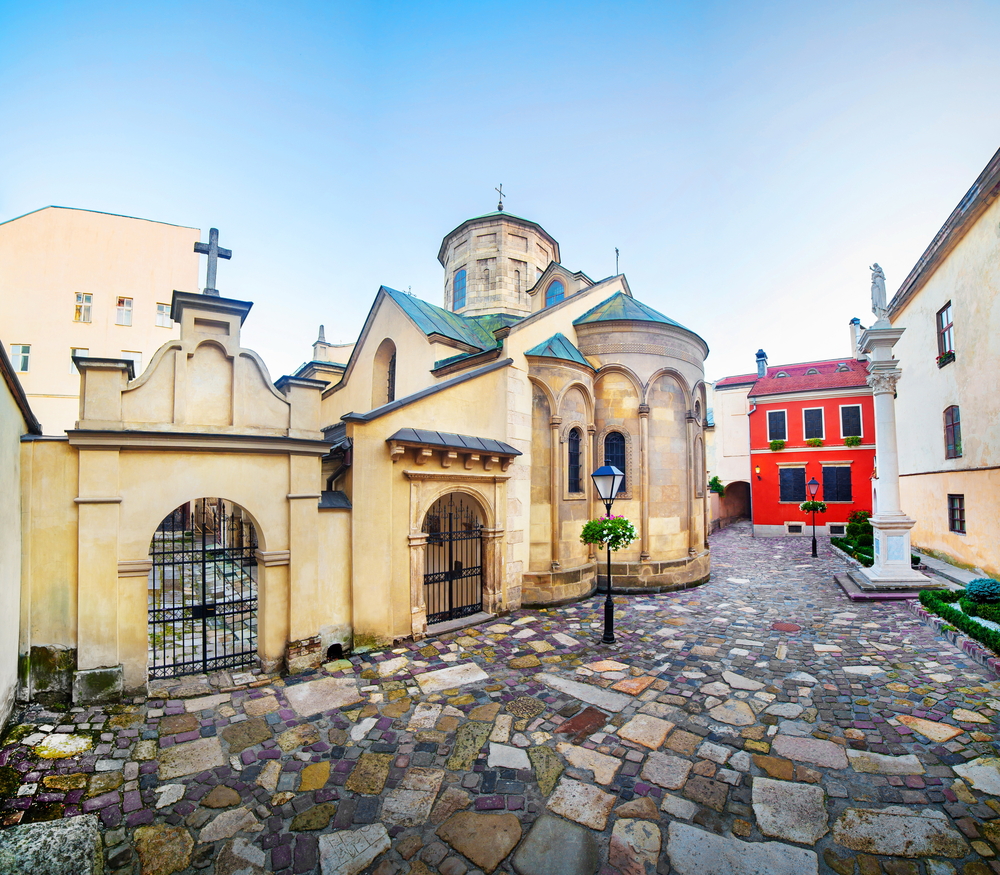
The original building perished in the fire of 1527. The structure that stands today blends a few architectural styles including Old Russian, Gothic and Armenian. The cathedral’s interior portrays an authentic image from the East: stylized Armenian sacrificial crosses carved in stone, called khachkars, which dating back to the 14-15th centuries. In addition, the decorative ensemble includes unique frescos on window posts, fragments of the oldest monumental painting in Lviv, and Modernist mosaics and wall-paintings of the early 20th century. All these aspects create unique forms and colouration, rarely found anywhere else in the world.
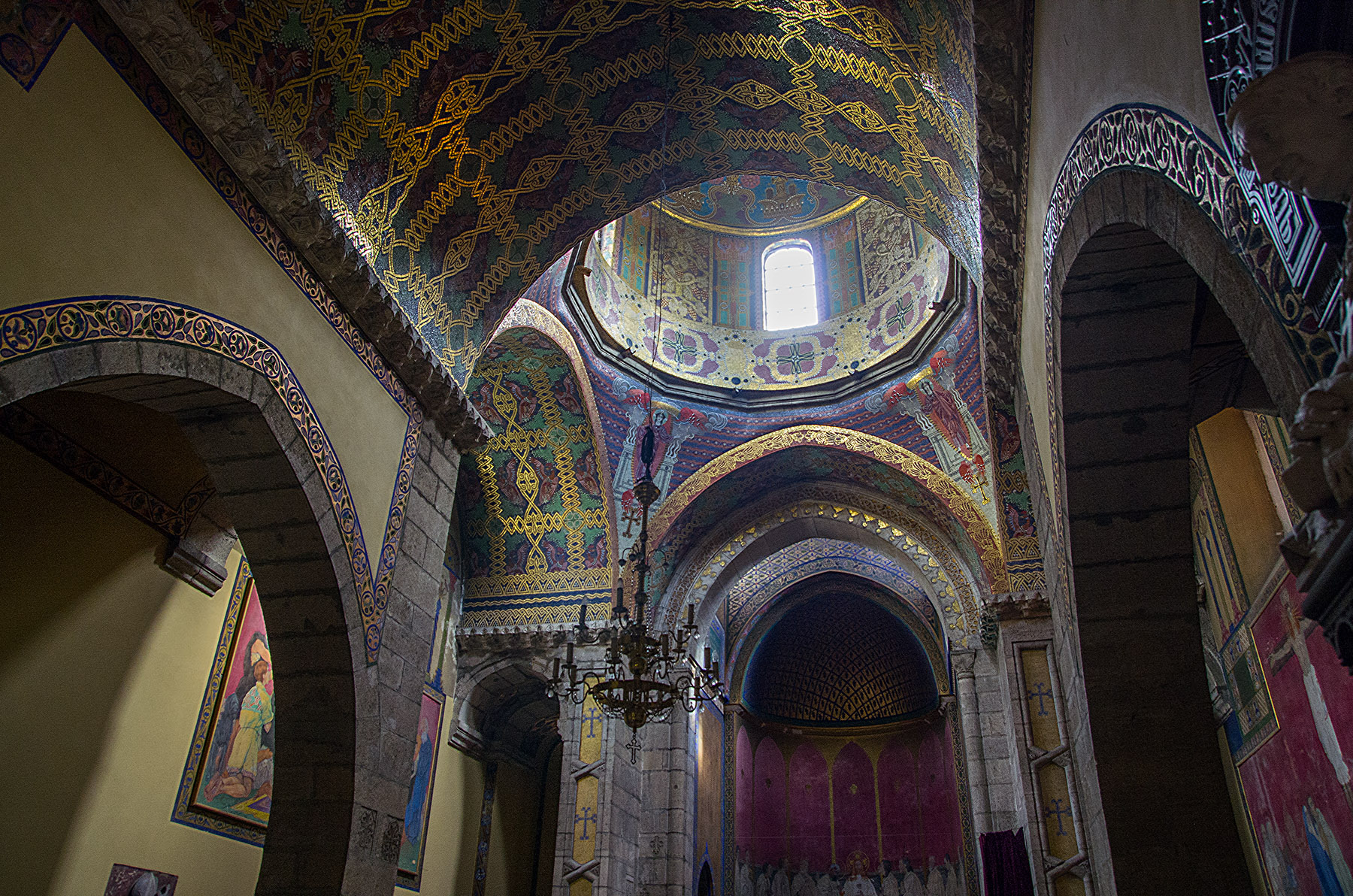
The original bell tower was erected in 1571, but was later toppled by the Turks during a siege. The 19th century version of the bell tower is an accurate restoration of its predecessor.
The placid cathedral courtyard is a maze of arched passageways and squat buildings festooned with intricate Caucasian details. Stepping into the courtyard feels like entering another era. The courtyard provides a tranquil setting for the decorative column and figure of St. Christopher. Here the remains of an ancient Armenian cemetery have been preserved: gravestones; the oldest one being 600 years old, have been transferred from cemeteries of other Armenian churches and monasteries in Lviv. These cemeteries vanished several centuries ago. The cathedral yard is evenly paved with gravestones, and gravestones are also built into the walls. Entering the cathedral yard from the direction of Krakivska Street one can see gravestones of the 16-17th centuries bearing well-preserved inscriptions to the right and to the left of the cathedral.
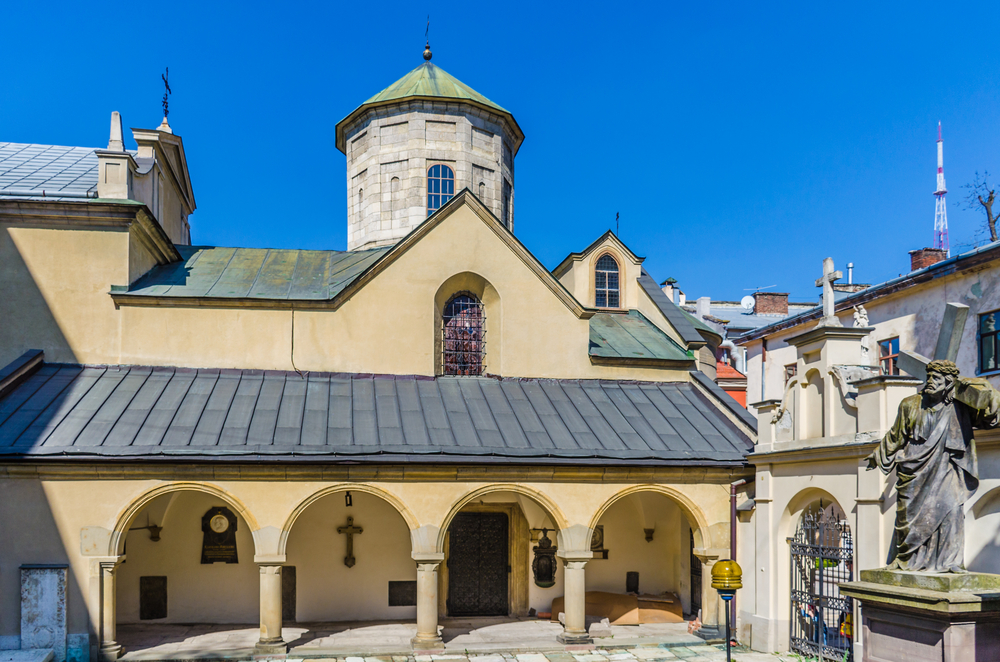
Another extraordinary part of the Armenian Cathedral of the Assumption of the Blessed Virgin in Lviv is the 18th century chapel, which is carved in wood and stands outside in the churchyard. The chapel contains an altar featuring the Passion of Christ on Calvary.
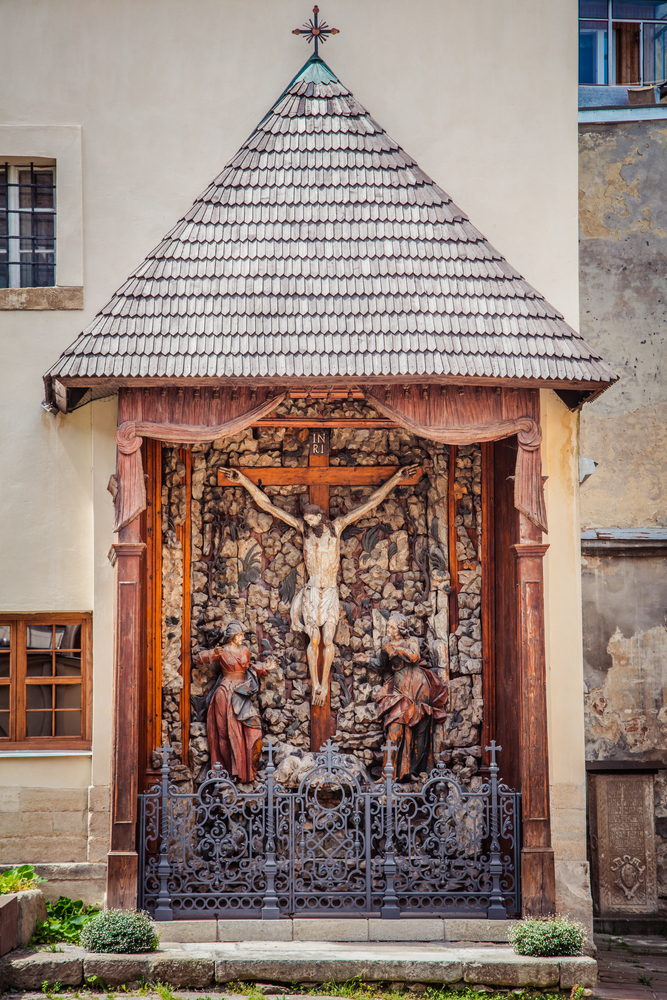
Outside, quaint, cobbled Virmenska street was once the heart of the old Armenian ('Virmenska' in Ukrainian) quarter. The neighboring buildings are those of a former Armenian bank, established in the 17th century, and Lviv’s oldest pawnshop.
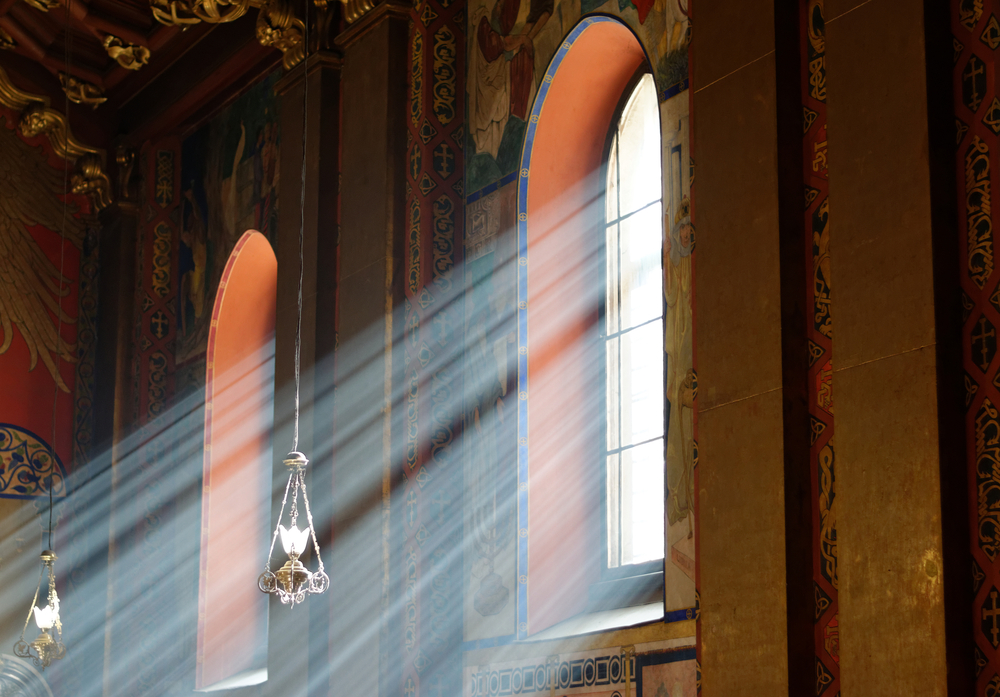
Read: Attractions in Lviv
Armenian Cathedral of the Assumption of the Blessed Virgin in Lviv is a unique landmark of Eastern culture in Europe. It successfully combines various architectural styles: the typical Armenian sanctuary, the Romanesque-Gothic style of Western Europe, and the traditional Ukrainian Galician type of astral architecture. One of the most popular travel destinations in Lviv, Armenian Church and Armenian Old Quarter is totally worth a visit.
Photo source: shutterstock.com, inlviv.in.ua. All images belong to their rightful owners.







